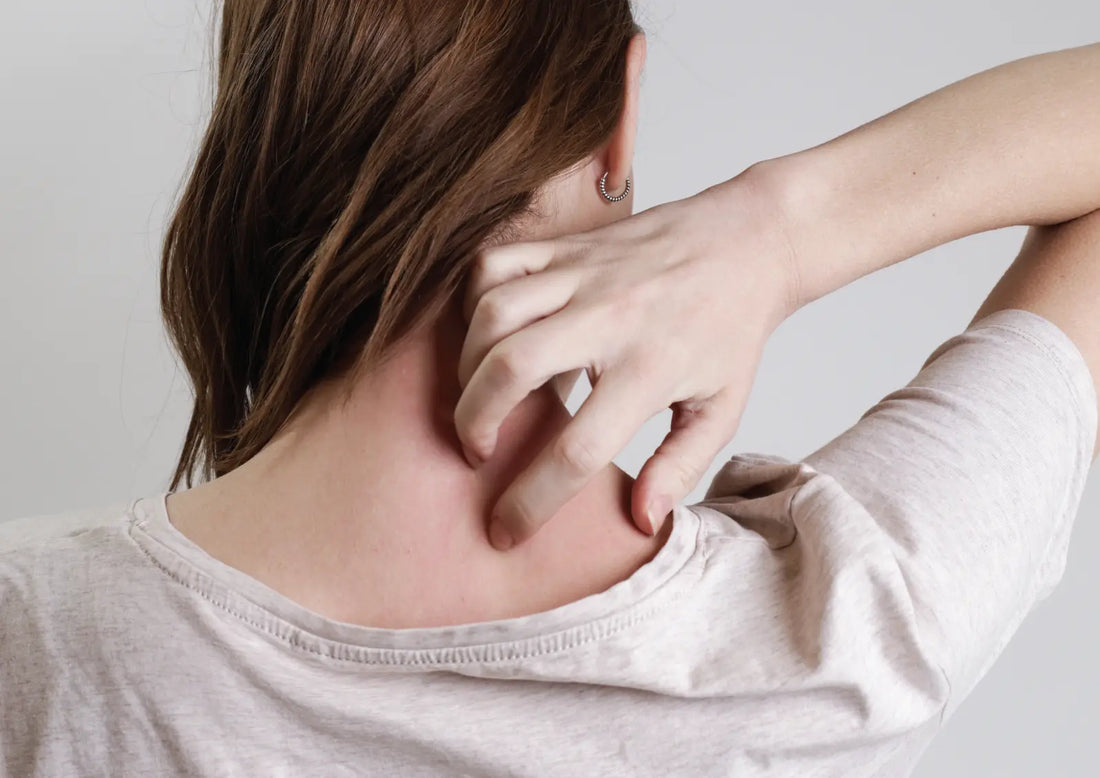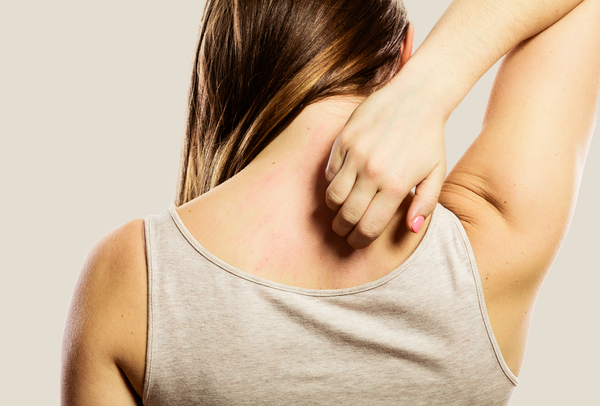You’d be surprised at how many people search for information about skin-related “bumps” on a daily basis. As a brand committed to skin health, we always wonder exactly what sort of bump someone may be experiencing, because all bumps are not created equal–and can be the result of common rashes. A few causes of different types of bumps include acne on the face, body, or scalp; as well as rashes due to contact or allergic dermatitis, or eczema—and in these cases SEEN may be able to help.
Face and body acne
Most blemishes can be considered “bumps” since the gunk inside and/or inflammation makes them elevated compared to surrounding skin. A few years back, our founder, Harvard-trained dermatologist Dr. Iris Rubin performed a study that was published in the prestigious Journal of Drugs in Dermatology. This research showed that after using non-comedogenic SEEN Shampoo and Conditioner for eight weeks, 70% with body acne and 52% with facial acne improved.[1] This is significant because SEEN is not medicated. This is simply proof that our Epidermal Rebalancing Technology works.
Scalp acne
Acne can affect just about any area of skin, and the scalp is no exception. Blemishes can form when pores on the scalp (which are also the exit points for individual strands of hair) become clogged with excess oil, dead skin cells, and comedogenic haircare products. Scalp acne can resemble facial or body acne, even if you can’t really see it since it’s obscured by your hair. However, a condition called scalp folliculitis can also cause bumps on the scalp. This happens when microorganisms such as bacteria or yeast cause hair follicles to become inflamed–and it can be mistaken for scalp acne. If switching to non-comedogenic haircare doesn’t help improve your scalp “bumps,” it may be worth a visit to the dermatologist who can identify the root of the problem.
Contact and allergic dermatitis
Contact or allergic dermatitis symptoms can range from itching and redness to scaly skin. Some of the most common allergens found in haircare products include fragrance, p-phenylenediamine (PPD) which is commonly found in hair dyes; nickel, balsam of peru, cocamidopropyl betaine/3-dimethylaminopropylamine, methylchloroisothiazolinone/methylisothiazolinone, and formaldehyde-releasing preservatives. It’s important to know that contact dermatitis can develop even after using a product or specific ingredient for an extended period of time.
The easiest way to minimize the risk of dermatitis caused by haircare is to make the switch to non-irritating products that are safe for sensitive skin, such as SEEN. When developing SEEN products, Dr. Iris Rubin avoids many common allergens and irritants that can cause contact dermatitis. She also reviews published research and reports on contact dermatitis, and consults with a contact dermatitis specialist about emerging allergens as well.
All of SEEN’s final formulas are subjected to repeat insult patch testing (RIPT) in subjects with sensitive skin, and every product is available fragrance free for those who may be allergic to fragrance. All of our fragrance-free formulas have received the National Eczema Association Seal of Acceptance™ and SEEN Fragrance-Free Shampoo, Fragrance-Free Conditioner, and Magic Serum have also been awarded SkinSAFE’s coveted “Trusted Choice” seals. This means those with sensitive or reactive skin can rest assured SEEN is less likely to cause flare-ups as compared to most traditional haircare, which does not consider common allergens and irritants during the formulation process the way that SEEN does.
Eczema
Initially appearing as a red, itchy, and potentially bumpy rash that eventually leaves skin looking dry or scaly, eczema is a common skin condition that can develop on any part of the body and/or the face. Eczema can also occur on areas of the body that come in contact with haircare products, such as the face, scalp, neck, back, and chest. Keep in mind that there are several types of eczema, and skin reactions caused by atopic dermatitis (the most common form of eczema) may not be bumpy at all. However, a less common type called papular eczema can lead to a skin rash with small bumps. (All the more reason to see a dermatologist if you experience unexpected skin changes.) Harsh ingredients and fragrance are among the more common eczema triggers, but you don’t have to worry about either with SEEN’s fragrance-free products and their National Eczema Association seals.
The takeaway
When dealing with bumps of any kind, it’s helpful to identify the cause. If they are related to acne, dermatitis, or eczema, non-medicated SEEN may be able to get your skin back on track—while allowing you to enjoy more good hair days at the same time!
[1] In a dermatologist-graded clinical study, 27 subjects with mild to moderate acne used SEEN shampoo and conditioner as a regimen for 8 weeks. SEEN is non-medicated and can help those for whom hair products are contributing to acne.




